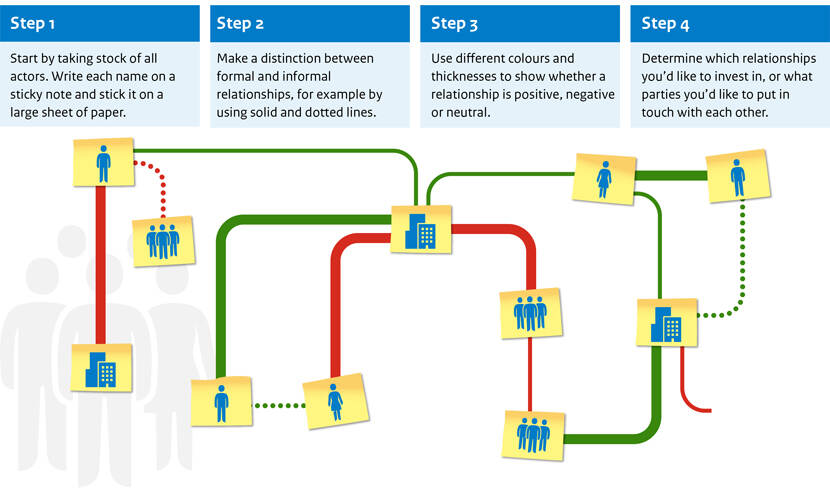Sociogram or network analysis
What are the relationships between the parties? Are the ties strong? Are the relationships good? This analysis is particularly useful if you don’t want to play a central role yourself and think it’s important for parties to communicate with each other. It provides insight into the question of who should engage in dialogue with whom.

- Start by taking stock of the various actors involved; write their names on sticky notes and stick them on a large sheet of paper (so you can move them around, if need be).
- Distinguish between hierarchical and non-hierarchical relationships and internal and external parties by using different colours and shapes, for example.
- Sometimes you will have to distinguish between an organisation and the people in the organisation. This can be useful when there are substantive conflicts between the parties but when the respective communication professionals get along well.
- This risk associated with this analysis is that it can quickly become very complex. The more specific your questions, the better it works. The analysis doesn’t have to be ‘completed’.
What the analysis means
- This analysis helps give you focus: who do you want to engage in dialogue with? Or who should engage in dialogue with whom?
- When you yourself do not have a good or strong relationship with a party, it can be useful to bring in other parties as communicators.
- And in some cases, it may be you who can bring other parties together.